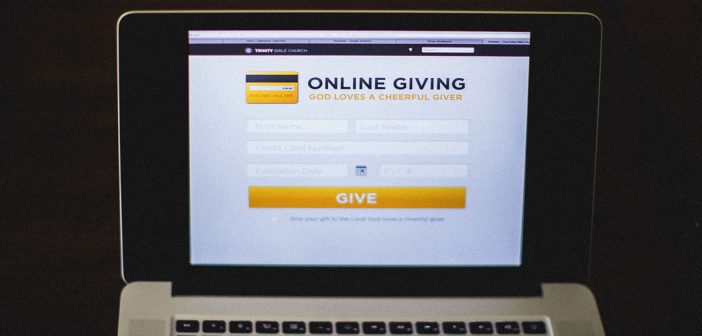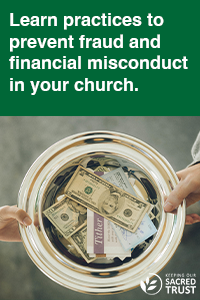Adam Copeland of Luther Seminary says electronic giving is the preferred method of giving for most churchgoers, including your most faithful givers. Reducing the barriers to giving via smart phone, recurring contribution on a debit or credit card, or even by text message, often requires a shift in culture. It is more than good fundraising. It is a matter of hospitality and convenience.
Electronic giving is no fad. According to a new study, it is the preferred method of giving for a majority of church members. In other settings, people have developed habits of giving that rely on e-giving methods. Many of our congregations, however, haven’t yet responded to these changes. So, what do we know about church-related electronic giving? How might the church respond?
In a culture in which I can give to most non-profits in a minute or less while on my iPhone at home, keeping up barriers such as expecting people to carry checks or cash is counterproductive. Allowing for online giving is a show of hospitality and convenience.
A Matter of Hospitality and Convenience
As suggested by recent research from Vanco Payment Solutions, there’s a “giving gap” in the church at large. In short, compared to what congregations offer, many more people would prefer to give by smart phone, recurring contribution on a debit or credit card, and even by text message. This result may not be particularly surprising, but it hopefully causes the church to sit-up and take notice.
Many congregations emphasize hospitality in their ministries, making sure signage is clear, parking is convenient, and facilities are clean. So too, having electronic giving available is an issue of hospitality. In a culture in which I can give to most non-profits in a minute or less while on my iPhone at home, keeping up barriers such as expecting people to carry checks or cash is counterproductive. Along these lines, providing a church website that allows for online giving is another show of hospitality and convenience.
Preferred by the Most Engaged Churchgoers
Contrary to how many of us speak of e-giving in the church, the same Vanco study found that churchgoers who are most engaged with their congregations have stronger preferences toward electronic giving. Some congregations approach the electronic giving conversation primarily as a means for getting those occasional attenders to give more regularly. If we allow for a monthly recurring draw from their bank account, we figure, then, perhaps they’ll give more regularly. Well…. Perhaps. But the Vanco study finds that those most likely to give are those people in our pews most Sundays. So why not make electronic giving easier for these active members? As a bonus, recurring giving options like monthly draws from bank accounts can help a congregation’s cash flow remain steady, avoiding that dreaded summer lag.
A Shift in Culture
Moving towards electronic giving — just like the church’s move from once being supported by tax dollars and pew rentals — requires a shift in culture rather than a one-time change. It’s not as simple as putting a note in the newsletter every few months, but establishing and modeling shifts in practice. For example, many people like the physical act of putting something in the offering plate when it is passed. So, consider providing cards or tokens in each pew that people can place in the plate as a sign of their electronic gift.
If your congregation offers an easy way to give via smart phone or text-to-give during the service, having a leader note this invitation out loud may help avoid some of the awkwardness — or, let’s face it, judgment — when using one’s smart phone during worship.
Express Gratitude
Finally, as with all church giving, don’t forget to find ways to say “thank you” to those who give electronically. God works in many and mysterious ways, even through digital technologies like electronic giving. As we move to embrace digital forms of giving, we also must not forget to express our gratitude to God who is always doing a new thing!
This article was first published on luthersem.edu/stewardship and used by permission.
Related Resources:
- Online Giving Connects Ministry and Mission by Cynthia D. Weems
- Electronic Giving: A Matter of Vision, Not Just Convenience by Heber Brown
- Congregational Giving Profile






